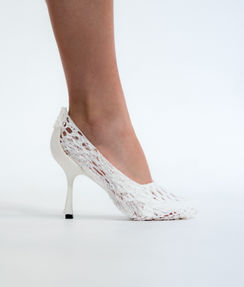
CONCEPT
Design for additive manufacture (DfAM) is a pre-established term to identify the principles of the process. This changes the system of making from the design stage right through to disassembly in the afterlife. This research portfolio aims to demonstrate a new system for the design of high heel shoes. With computational design and manufacturing methods being a key focus for this research, this workflow will be vastly different to that seen in traditional manufacturing of high heels. The scale of inventory will be significantly reduced from mass to on demand production, which may be available in areas near the customer. Digital files can be sent to 3D printers anywhere in the world, making production a locally accessible process which may become more common in the future. Many stages of the traditional manufacturing process can be cut by rationalising materials and constructing the shoe with fewer components.
This new system will allow for an elevated level of personal customisation through parametric control. Customisation of products can increase the longevity of a product from personal attachment (Diegel et al., 2010). The desire to express individuality is more prominent in current culture which suggests there is to be a greater degree of style variations across fashion. The marriage of computational design with 3D printing offers an opportunity to cater for this demand.
Although sustainability is not the primary focus of this research, the combination of all these considerations may show a route of production that has a much more positive effect on the environment in comparison to traditional methods.














